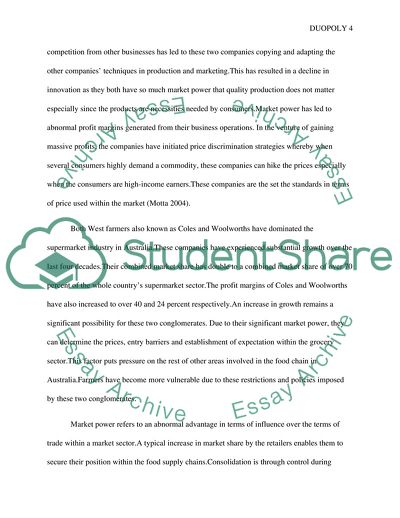Cite this document
(Economic debate on the structure of the supermarket industry in Research Paper, n.d.)
Economic debate on the structure of the supermarket industry in Research Paper. https://studentshare.org/macro-microeconomics/1877355-economic-debate-on-the-structure-of-the-supermarket-industry-in-australia-focuses-on-whether-or-not-a-coles-and-woolworths-dominate-the-industry-b-competition-is-good-for-australian-consumers
Economic debate on the structure of the supermarket industry in Research Paper. https://studentshare.org/macro-microeconomics/1877355-economic-debate-on-the-structure-of-the-supermarket-industry-in-australia-focuses-on-whether-or-not-a-coles-and-woolworths-dominate-the-industry-b-competition-is-good-for-australian-consumers
(Economic Debate on the Structure of the Supermarket Industry in Research Paper)
Economic Debate on the Structure of the Supermarket Industry in Research Paper. https://studentshare.org/macro-microeconomics/1877355-economic-debate-on-the-structure-of-the-supermarket-industry-in-australia-focuses-on-whether-or-not-a-coles-and-woolworths-dominate-the-industry-b-competition-is-good-for-australian-consumers.
Economic Debate on the Structure of the Supermarket Industry in Research Paper. https://studentshare.org/macro-microeconomics/1877355-economic-debate-on-the-structure-of-the-supermarket-industry-in-australia-focuses-on-whether-or-not-a-coles-and-woolworths-dominate-the-industry-b-competition-is-good-for-australian-consumers.
“Economic Debate on the Structure of the Supermarket Industry in Research Paper”. https://studentshare.org/macro-microeconomics/1877355-economic-debate-on-the-structure-of-the-supermarket-industry-in-australia-focuses-on-whether-or-not-a-coles-and-woolworths-dominate-the-industry-b-competition-is-good-for-australian-consumers.


